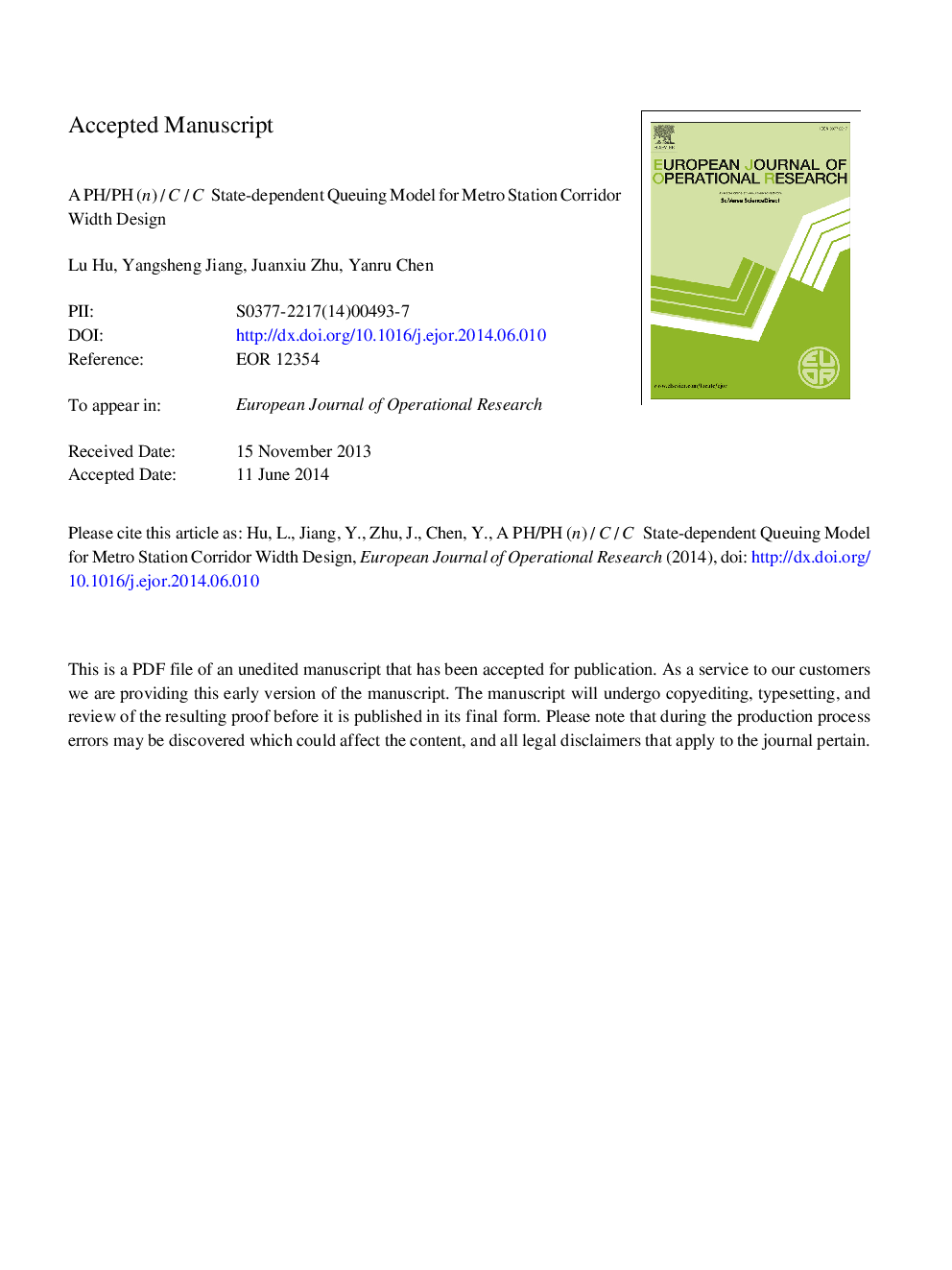| Article ID | Journal | Published Year | Pages | File Type |
|---|---|---|---|---|
| 6897151 | European Journal of Operational Research | 2015 | 24 Pages |
Abstract
Metro station corridor width design considering demand fluctuation as well as the randomness and state-dependence of service time is an urgent concern and a complicated random planning issue. This paper confirms the accuracy of phase-type distribution (PH) fitting for passenger arrival intervals and service times with randomness and state-dependence in metro station corridors. A PH/PH(n)/C/C state-dependent queuing model is thus established by a finite level-dependent quasi-birth-death (QBD) process. The existing M/G(n)/C/C, M/G/1/C, and D/D/1/C models are proved to be special cases of the PH/PH(n)/C/C model through theoretical derivation and the precision of the proposed model is analyzed through simulation tests. The quantitative relationship between the level of service (LOS) and the corridor width is established based on the proposed model. A total of 81 experiments are designed to compare the calculations between the proposed model and the M/G(n)/C/C, M/G/1/C, and D/D/1/C models. Comparison results demonstrate that (1) the value of effective width of the PH/PH(n)/C/C queuing model is higher than those of the M/G(n)/C/C, M/G/1/C, and D/D/1/C models; (2) the real area occupied per person in the corridor of the PH/PH(n)/C/C queuing model is mostly proximate to the designed LOS, whereas those of the M/G(n)/C/C, M/G/1/C, and D/D/1/C models fail to meet the designed LOS; and (3) the performance measures of the PH/PH(n)/C/C queuing model enjoy high performance-width elasticity and are significantly improved compared with those of the M/G(n)/C/C, M/G/1/C, and D/D/1/C models.
Related Topics
Physical Sciences and Engineering
Computer Science
Computer Science (General)
Authors
Lu Hu, Yangsheng Jiang, Juanxiu Zhu, Yanru Chen,
